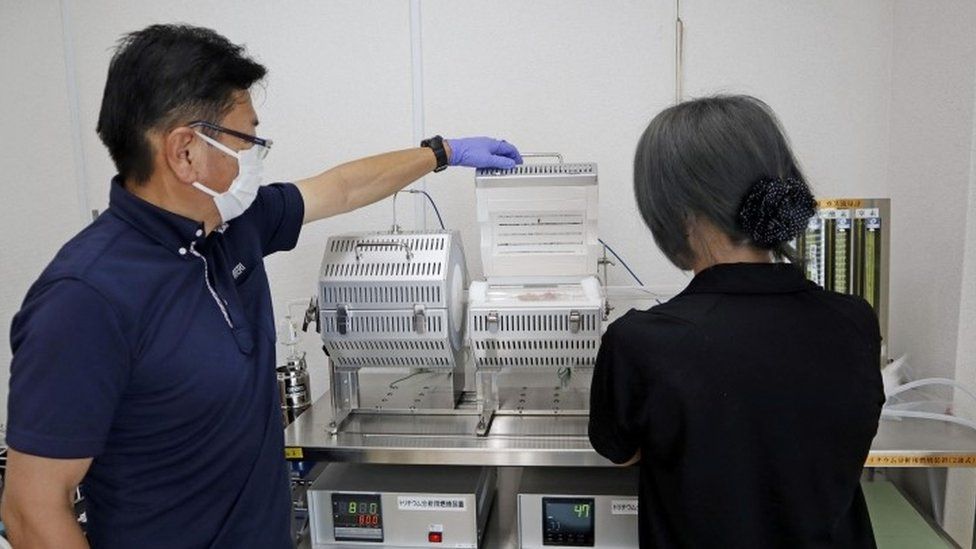The Japanese government says tests of seawater from around the Fukushima nuclear power plant are showing no detectable levels of radioactivity.
It is seeking to allay concerns from neighbouring countries and fishing groups about the release of treated water from the plant into the ocean.
Weekly test results will be published for the next three months.
More than a million tonnes of water stored at the nuclear plant will be discharged over the next 30 years.
It has been accumulating since 2011 when the plant was badly damaged by a tsunami.
Japan says the water is safe, and the UN’s nuclear watchdog has approved the plan, but critics say the release should be halted.
The water is being filtered to remove most radioactive elements then diluted to reduce levels of tritium, a radioactive isotope of hydrogen which is difficult to separate from water.
The Environment Ministry said samples from 11 locations near the plant showed tritium levels below 7-8 becquerels per litre, the lower limit of detection.
The water “would have no adverse impact on human health and the environment”, it added.
- Fukushima: Why some scientists worry about water impact
- What are the concerns over Fukushima water release?
- What happened at Fukushima 12 years ago?
The test results came after China described the discharge as an “extremely selfish and irresponsible act”.
On Thursday it said it would block all imports of Japanese seafood.
There has also been opposition to the release of water in South Korea, and on Thursday protesters in the capital Seoul attempted to storm the Japanese embassy.
On Sunday, South Korea said it had sent nuclear experts to Fukushima to monitor the discharge process.
Related Topics
- Fukushima nuclear disaster
- Japan
